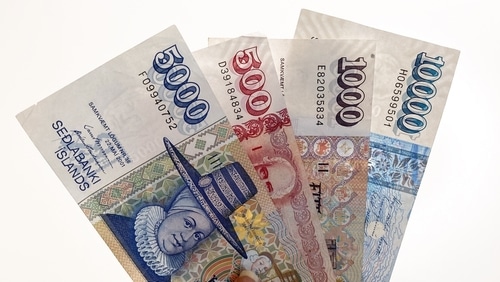Iceland is known as the “Land of Fire and Ice.” It is a place with a strong and old culture. The country has its own money system. The Icelandic króna (ISK) is used by everyone in the country. This money shows the story of Iceland and how its people stay strong. In this guide, you will read about the history of the króna, its different coins and notes, how to swap it for other money, and some good tips for both visitors and people who live there.
Understanding the Icelandic Króna (ISK)
A Brief History
Iceland’s story with its money is linked closely to the changes in its government. At first, when Iceland was under Danish rule, the people used the Danish rigsdaler. In 1874, the Danish krone took the place of the rigsdaler. After that, in 1885, Iceland started to put out its own banknotes. When World War I broke out, the Scandinavian Monetary Union ended. Because of this, Iceland made its own money, called the króna, in 1918. When Iceland became fully free in 1944, the króna became the country’s official money.
Denominations and Design
The Icelandic króna can be found as coins and as banknotes. If you want to read more about it, go to Guide to Iceland.
Banknotes:
- 500 krónur
- 1,000 krónur
- 2,000 krónur
- 5,000 krónur
- 10,000 krónur
Each banknote shows well-known people from Iceland. The banknotes also have different colors, so it’s easy to tell them apart.
Coins:
- 1 króna
- 5 krónur
- 10 krónur
- 50 krónur
- 100 krónur
Icelandic coins often show sea animals and famous story creatures. This shows the country’s culture and nature from the past.

Practical Tips for Handling Icelandic Currency
- Card Usage: Credit and debit cards are used in almost all parts of Iceland, even in places that are far from big towns. Still, it is good to keep some cash with you for smaller buys or for when you find a place that does not take cards.Monito
- Currency Exchange: There are many ATMs in Iceland, and they usually give a good rate if you take out money. But, you will not find many places to change currencies if you leave the big cities. So, plan ahead if you feel you will need cash.
- Tipping Culture: People in Iceland do not tip often, since most bills already include what they need to pay for service. But if you feel you got great help, giving a small tip is a nice thing to do.
- VAT Refunds: People visiting can get some of the taxes on shopping back if they spend over a set limit. Be sure you get the right paper when you buy something, and show it at the airport when you go home.
Currency Exchange Example
To show how money exchange works, look at the example below:
- Amount: $100 USD
- Exchange Rate: 1 USD is 135 ISK
- Converted Amount: If you have $100, you get 13,500 ISK
Always look at the current exchange rate before you change money, because the rate can go up or down every day.
Frequently Asked Questions (FAQs)
What is the symbol for the Icelandic króna?
The Icelandic króna uses the symbol “kr.” It is known by the ISO code ISK.
Can I use euros or US dollars in Iceland?
Some shops and places for tourists may take euros or US dollars. But the main money people use in Iceland is the Icelandic króna. This is what most places will want you to pay with.
Are there any restrictions on bringing currency into Iceland?
People can bring up to ISK 8,000 in cash with them and do not have to tell anyone. If you bring more than this, you must let them know when you get there.
Is it better to exchange currency in Iceland or before traveling?
Exchanging money in Iceland, especially at ATMs, will often give you better rates than if you change money in another country. But, it is a good idea to check and compare the rates and any fees before you do it.
